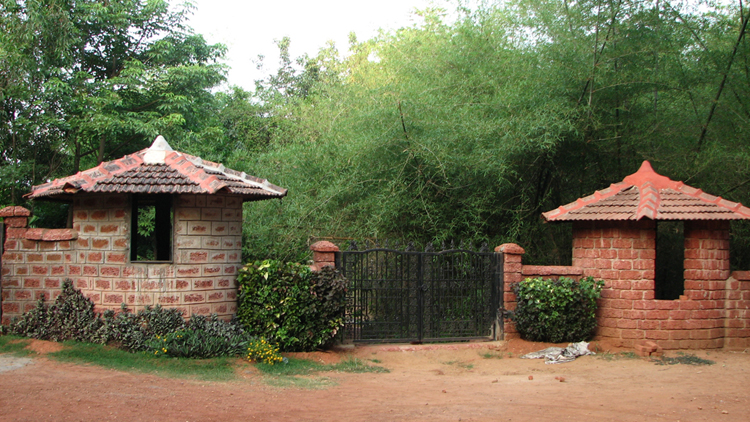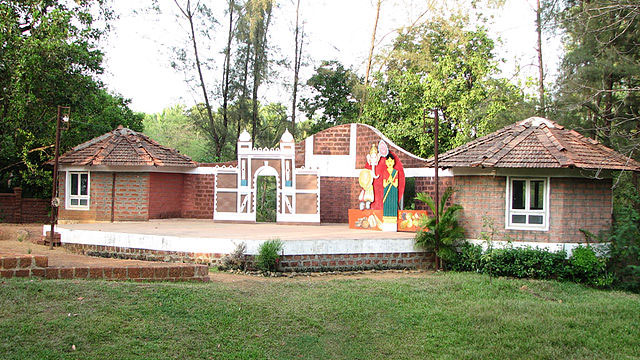Udaipur’s traditional Rajasthani culture with a dash of Mughal and European architecture make it a city full of a vibrant ethos. Not only does the city of lakes have some of the best architectural marvels of Rajasthan, its culture and heritage can also be presented through arts and crafts, which are a popular medium of Rajasthani history. The lifestyle of the tribal people of Rajasthan can be witnessed at Shilpgram, the rural complex of arts and crafts in Udaipur. Shilpgram is situated in the western part of Udaipur, under the beautiful backdrop of the Aravalli Hills and lush greenery. Not only is Shilpgram considered a living museum of traditional arts and crafts, it also holds special workshops and tutoring sessions for the young and old so that the culture of Rajasthan spreads far and wide. Here are some highlights of Shilpgram that will make you want to visit it for sure.

Interesting Facts
- Shilpgram comprises various kinds of huts that individually cater to certain type of architectural qualities of the Rajasthani culture, giving a different experience everywhere within the complex.
- Contemporary urban ceramists, potters, visual artists, designers etc. work together to create a collection every day that is displayed during exhibitions for visitors.
- Simple, daily objects are depicted in beautiful and artistic ways with the addition of tribal and rural art that give them a diverse quality.
- Skilled craftsmen are often invited during workshops and camps, and they demonstrate their ways of creating the masterpieces displayed in the museum.
- The Air Amphitheatre in the complex is one of the main attractions of Shiplgram, with a capacity of seating 8000 people. Festivals are regularly held in the amphitheatre where performances of the folk and tribal people take place.
- Members of tribal and folk villages are a part of Shilpdarshan, where visitors witness the demonstrations and have direct interactions with the craftsmen to buy the created products.
- The huts that display tradition and originality consist of textile, decorative objects, household articles of metal or wood, agricultural tools and craftsman objects that represent the rural lifestyle in simple yet artistic ways.
- According to the ancient manner of building huts and homes of occupational dwellers, the huts are created in Shilpgram in an adjoining manner, giving the feel unity in diversity.
- There are huts that represent the culture of the western part of India, including Gujarat and Maharashtra, making Shilpgram a rather diverse environment.
Things to Do
- Shilpgram has a plethora of things to see and experience. If you visit at the time of special performances at the amphitheatre, folk dances are a must watch.
- Visiting as many huts as one can explore is recommended to learn about the sheer diversity of culture that Rajasthan alone possesses.
- Communities from Kutch and other nearby areas in some of the huts represent the tribal communities like the Muslim, Rebari and Harijan. In these huts, you can get to see the intricate embroidery work, wood work, mirror and bead work, and pottery of splendid nature.
- Tribal communities from Maharashtra are also based in some of the huts, depicting Konkani culture which should also be paid a visit to so that one can purchase the many handicrafts at reasonable prices.
- Involving oneself in the many activities going on will leave a visitor with a lasting experience at Shilpgram.
- Camel rides are also quite popular while at Shilpgram.
Things to Carry
- If you plan to spend a long time exploring the many huts and indulging in the activities, water bottles should be carried along to last a few hours.
- Local food stalls are usually found around the complex where traditional Rajasthani cuisine can be enjoyed, so carrying food is not required.
- Comfortable shoes will allow you to take a long stroll around the huts and other stalls throughout your time there.
- Photography is permitted so a camera can be carried.
Timings
11am to 7pm
Entry Fees
Indian (adult and child)- Rs.30
Foreign visitors- Rs.50
Best Time to Visit
December, as an annual fair takes place which makes the experience more entertaining and educational at the same time.

How to Reach
Shilpgram can be accessed through a public or private vehicle as it is located a little outside of Udaipur.
Nearby Attractions
- The Shilpi Restaurant is located just outside of Shilpgram which serves continental, vegetarian and non-vegetarian food.
- The Rajiv Gandhi park is situated close by on Rani Road.
- Lake Fateh Sagar is not far away from Shilpgram, and during evenings it gets more attractive.
- The Monsoon Palace is the closest monument to Shilpgram that depicts more of the culture of the Mewar dynasty in Udaipur.
- Bhartiya Lok Kala Mandal is nearby showcases performances by folk dancers and singers.
- The Sajjangarh Wildlife Sanctuary can be visited along with a day at Shilpgram as they are located close by.
Udaipur is one of the greatest examples of Rajasthani culture and heritage, and since Shilpgram displays the traditional aspects of other areas in the western part of India, the city becomes even more desirable.


How to purchase a shop on Shilpgram fair?